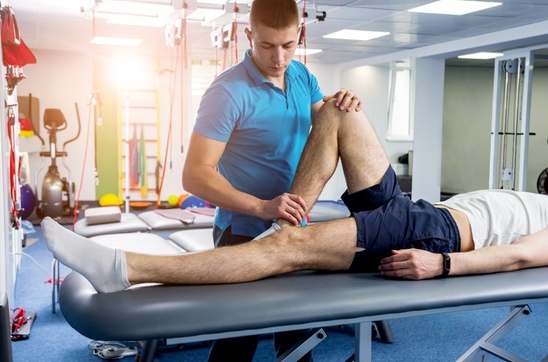The recovery timeline for athletes undergoing sports injury surgery often differs from that of non-athletes due to several factors, including the demands of their sport, their baseline fitness levels, and the intensity of their rehabilitation programs.
Here’s a comparison of the typical recovery timelines for athletes versus non-athletes:
1. Preoperative Fitness Level
- Athletes: Typically have a higher baseline fitness level and muscle strength, which can aid in a faster initial recovery and rehabilitation process.
- Non-Athletes: May have a lower baseline fitness level, potentially leading to a slower start in the rehabilitation process.
2. Rehabilitation Intensity
- Athletes: Often undergo more intensive and sport-specific rehabilitation programs designed to restore full function and performance. They may have access to specialized physical therapists and trainers who tailor the recovery process to their sport’s demands.
- Non-Athletes: Generally follow a standard rehabilitation program focused on restoring daily functional activities. The intensity of rehab might be less rigorous compared to that of athletes.
3. Recovery Goals
- Athletes: Aim to return to competitive performance levels, which requires achieving a higher degree of physical and functional recovery. This can sometimes extend the rehabilitation period as they must be cautious to avoid re-injury.
- Non-Athletes: Primarily aim to regain normal daily activities and may not need to reach the same high level of physical performance, potentially shortening the overall recovery timeline.
4. Psychological Factors
- Athletes: May experience psychological pressure to return to their sport quickly, which can influence their recovery timeline. The mental aspect of overcoming the fear of re-injury and regaining confidence in their abilities is crucial.
- Non-Athletes: May not face the same level of psychological pressure to return quickly, allowing a potentially more relaxed and steady recovery process.
5. Typical Recovery Timeline Differences
Knee Surgery (e.g., ACL Reconstruction):
- Athletes: Full recovery can take 9 to 12 months or more. Athletes often start light sport-specific activities around 6 months, with a gradual return to full participation.
- Non-Athletes: Recovery for resuming normal activities can take about 6 to 9 months. Return to non-strenuous activities might occur around 4 to 6 months.
Rotator Cuff Repair:
- Athletes: May require 6 to 12 months to return to full sports participation, depending on the sport’s demands on the shoulder.
- Non-Athletes: Typically return to normal activities within 4 to 6 months, with less intensive use of the shoulder.
Fracture Repair:
- Athletes: Depending on the location and severity, recovery might range from 3 to 6 months for full return to sport, with intensive rehab.
- Non-Athletes: Recovery might take about 6 to 12 weeks for daily activities, with a gradual increase in activity level thereafter.
Summary
While both athletes and non-athletes follow similar initial recovery stages after sports injury surgery, athletes often have a longer and more intensive rehabilitation process due to the need to return to high levels of performance. Non-athletes typically recover sooner for normal daily activities but might not reach the same high functional threshold required by athletes.





Comments